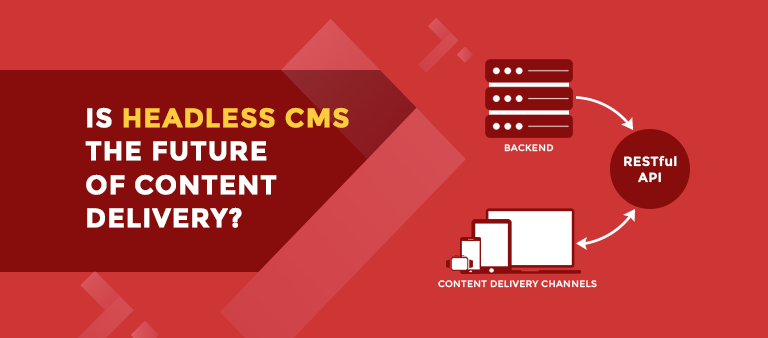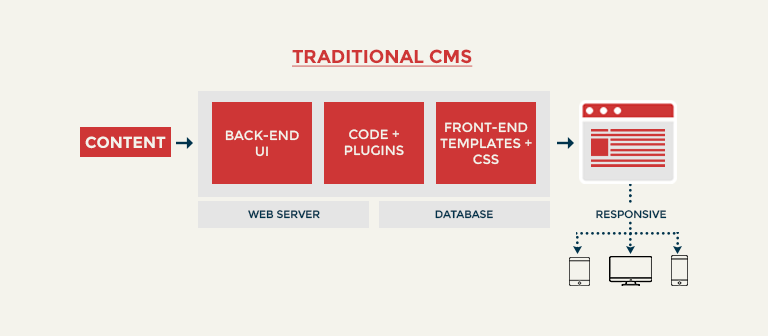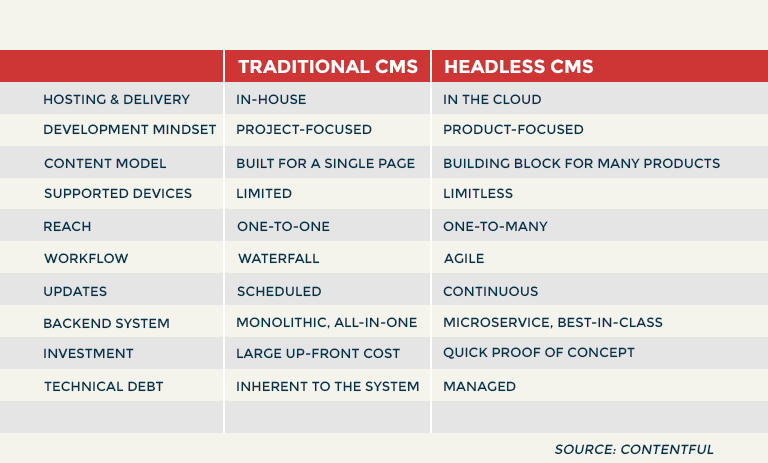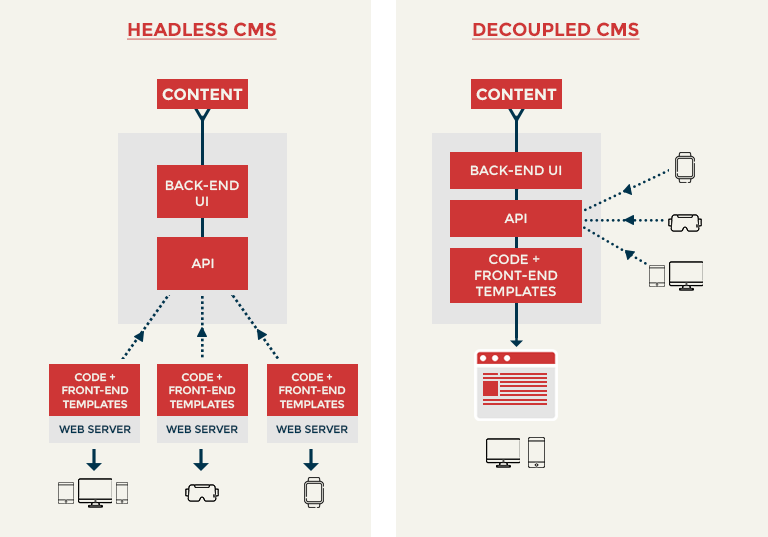By 2025, we’ll be surrounded by more than 31 billion IoT devices. As a business, this is both good and bad news for you. The good news is that you have an opportunity to get creative and gain the attention of your customers through various touchpoints. The bad one is that you already know how challenging it could be to get the right content, at the right time in the right format, in front of the right audience on the right device!
These challenges faced by businesses have made them go headless for a reason.
Isn’t Halloween over? Then why are we talking about spooky headless? Oh yes, you got it right!
Today we’ll be discussing headless CMS, how it’s different from traditional CMS architecture. Are headless CMS and decoupled CMS architecture synonymous? And finally, when it’s worth it for your business and when it isn’t. So, let’s get started!
Content Management Systems are around for more than three decades. Let’s understand first why they even came into existence.

Why did the need for a CMS arise in the first place?
As the World Wide Web moved from static sites to interactive websites, the need to publish fresh and relevant content came to the forefront. For example, human resources would like to post new jobs on the career page, marketing would like to post new blogs that address customer pain points, Customer success would like to interact with customers online, and so on.
A CMS helps multiple stakeholders within the organization to add, modify and remove content from your website without requiring the knowledge of HTML, CSS, or programming languages. It thus eliminates the involvement of a developer in updating content on your website.
Now the question arises, why then is the CMS space moving towards a headless CMS trend? To understand this, let’s first understand the components of legacy CMS solutions.

How does a traditional or coupled CMS work?
You must be familiar with the traditional or coupled CMS architecture that is used by popular platforms such as WordPress, Joomla, Drupal, etc.
As the word coupled suggests, in a traditional CMS architecture the frontend publishing functions are coupled or linked with the backend processes.
Therefore, both content editors and developers can see and use the same WYSIWYG interface to create and edit content, and when building websites with CMS tools respectively. The built-in database stores content and the built-in frontend delivery displays content (as shown in the image).
Traditional or coupled CMS vs. headless CMS

Factors driving the popularity of headless CMS
Omnichannel is the new normal
With so many devices at play, getting your content in front of the right audience, at the right time on the right device is a big challenge and an opportunity as well. Today, brands are leaving no stone unturned to gain and retain customer attention.
To survive in this competitive era, you would also need to scale your content marketing efforts and advertising strategy in order to cover more touchpoints and devices. No wonder omnichannel marketing has become a critical factor in customer acquisition and retention.
Now that you know about the benefits of omnichannel content delivery, understanding the popularity of headless CMS is a no-brainer, right! Headless CMS enables you to automatically publish to multiple platforms via an API and provides a consistent experience across all channels.
Flexibility and easy integration
While a traditional CMS is restrictive in terms of having a fixed structure for coding or development, a headless CMS offers a lot of flexibility to developers.
A coupled CMS would need you to work with a particular programming language or framework. On the other hand, headless CMS would let you work with tools of your choice and leverage your expertise by facilitating integration with other systems, regardless of how complex they are.
As a headless CMS allows easy integration with different platforms, you can make the most of this flexibility to stay ahead of the game.
Content personalization
Don’t you like when someone addresses you by your name? Your customers are also real human beings and they also like to be treated like a person rather than a number.
Adding a personal touch to your content and delivering unique experiences to your customers can make you stand out. Personalized content saves your customers from the paradox of choice (when having too many choices, stresses out your customers and makes decision-making difficult for them). And it also helps increase customer loyalty.
Headless CMS allows you to keep pace with constantly changing consumer behaviour and the ever-evolving devices along with them.
Streamline business processes
Today business processes can no longer operate in silos; they need to work in an integrated manner to create a competitive edge.
For example, if the sales team struggles to locate the relevant information to spark customers’ interest or to address their concerns, then the efforts of the marketing team in producing these materials go in vain.
Therefore, with a headless CMS embedded within the sales enablement application, you can help your sales team to curate marketing materials and also individualize links for each customer engagement.
So, these are some of the use cases when your business should go for headless.
However, depending on your business needs a decoupled CMS can also suffice. Let’s find out!
Are headless CMS and decoupled CMS synonyms?

Headless and decoupled CMS are similar in the sense that they have frontend and backend processes separated for improved performance and scalability.
Although decoupled and headless are often used synonymously, there’s a significant difference between them.
Unlike decoupled CMS that uses specific frontends for content publishing and distribution, headless CMS uses application programming interfaces (APIs) to deliver content across different frontend channels.
What sets decoupled CMS apart from headless is that the former comes with ready-made templates that allow marketers to create and publish content using those easy-to-use tools.
So, a decoupled CMS basically comes with the benefits of both the coupled or traditional CMS and headless CMS. Many businesses have been leveraging the decoupled CMS architecture to power their site.
Is headless CMS the right fit for your business?
Before you decide to go headless, it’s crucial to first assess your business requirements. Do you have simple publishing needs? Are the templates of your current CMS sufficient for your needs? Do you have limited IT support?
If your answers to these questions are in “yes” then there’s likely no need for you to invest in a headless CMS yet. Every business is unique and therefore, just asking these three questions may not help you make an informed decision.
Therefore, we recommend you get in touch with our CMS development experts and find out a solution that is tailored to your specific needs.
Do you have any questions regarding this blog, please feel free to drop us a line in the comments section. We’d love to hear from you!


